Visitar este lugar no estaba previsto en el itinerario del grupo con el que fui de excursión a algunos sitios de la Península de Paraguaná, en el estado Falcón, pero uno de los organizadores lo sugirió al ver que teníamos un tiempo libre esa mañana antes de los paseos de la tarde, entonces varios decidimos ir, sonaba interesante.
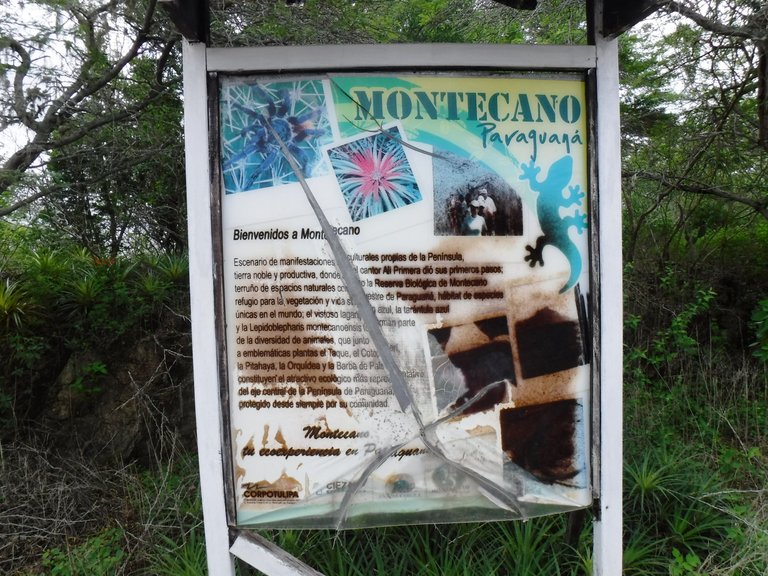
Located near the town of San José de Cocodite, the Montecano Biological Reserve is about 20 km from Adícora, the coastal town where we were staying. We got some cabs and went there, it was about 10:00 in the morning and although it was cloudy the heat was powerful, something normal in this area of the country.
Ubicada cerca de la población de San José de Cocodite, la Reserva Biológica Montecano está a unos 20 Km de Adícora, pueblo costero donde nos estábamos quedando. Conseguimos unos taxis y nos fuimos hasta allá, eran como las 10:00 de la mañana y aunque estaba nublado el calor estaba potente, algo normal en esta zona del país.
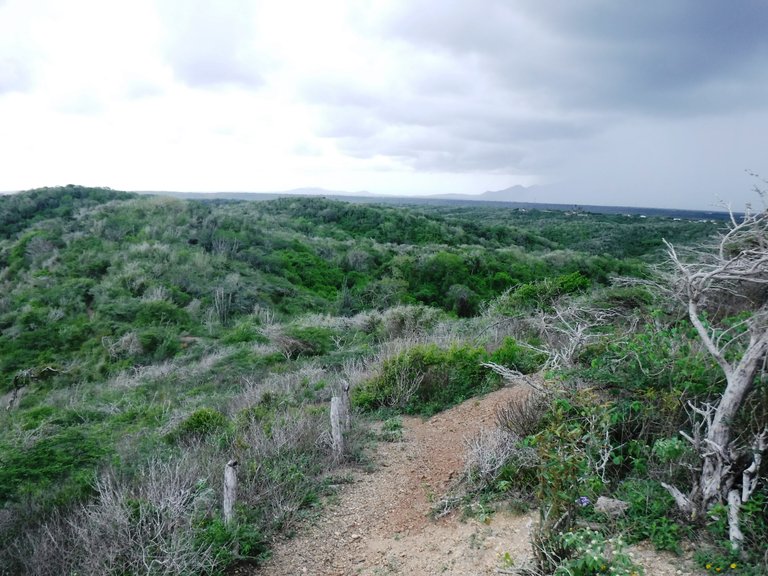
Upon arriving we saw the main entrance, where there is a house that serves as the reserve's administrative office and information center, it also has a small exhibit, jars with small animals preserved in formalin, some fossils and ancient objects that have been donated by people from nearby towns.
Al llegar vimos la entrada principal, allí está una casa que funciona como oficina administrativa de la reserva y centro informativo, tiene también una pequeña exhibición, frascos con pequeños animales conservados en formol, algunos fósiles y objetos antiguos que ha donado la gente de poblaciones cercanas.
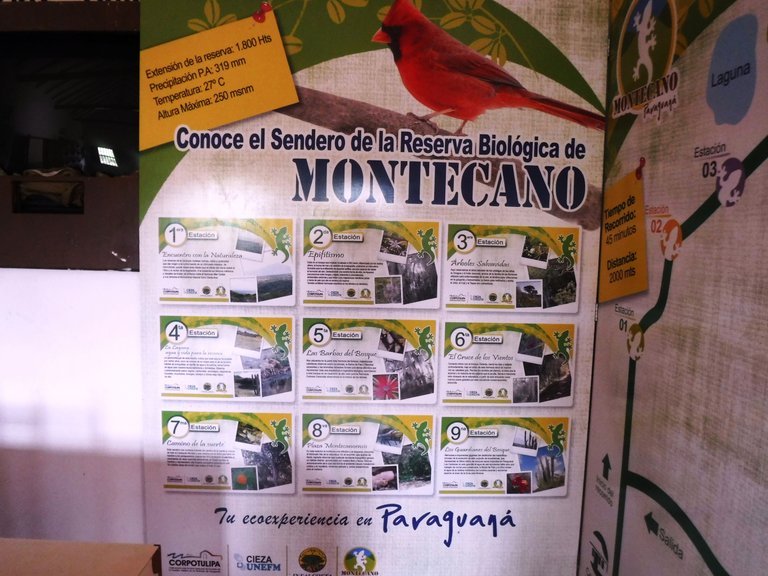
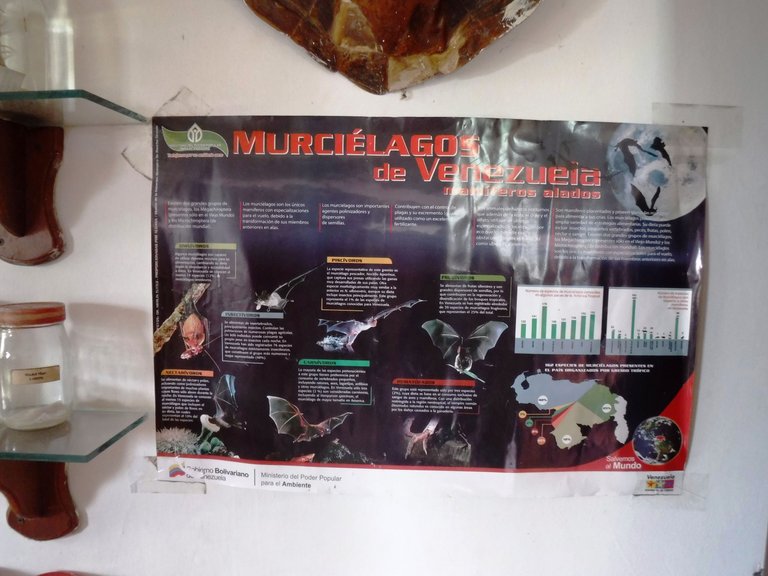
We were greeted by a local guide who told us about the reserve and what we would see on the tour, and we immediately set off to explore.
Nos recibió una chica que era guía del lugar, quien nos habló sobre la reserva y lo que veríamos en el recorrido, enseguida salimos a explorar.
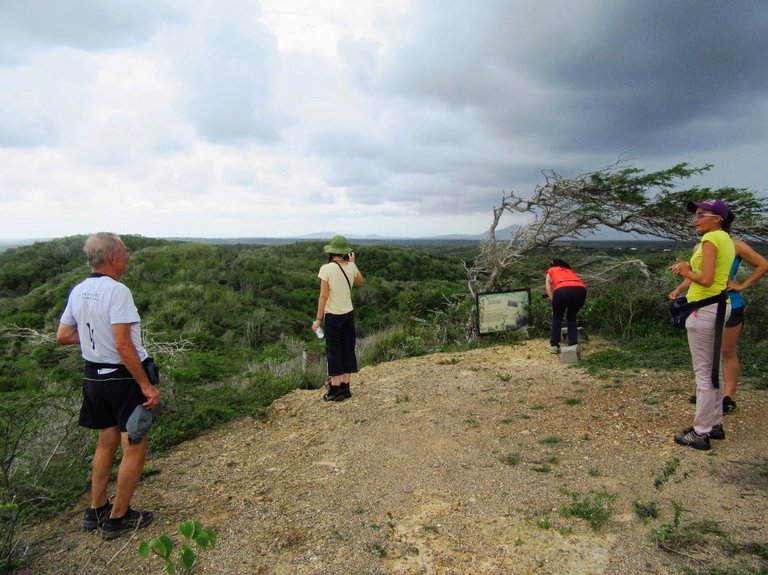
Created in 1985, the Montecano Biological Reserve has an area of 1,800 hectares with a maximum altitude of 250 meters and is a sample of the tropical dry forests that scientists believe existed throughout the Paraguaná Peninsula.
Creada en 1985, la Reserva Biológica Montecano tiene un área de 1.800 hectáreas con una altura máxima 250 metros y es una muestra de los bosques secos tropicales que los científicos creen existieron por toda la Península de Paraguaná.
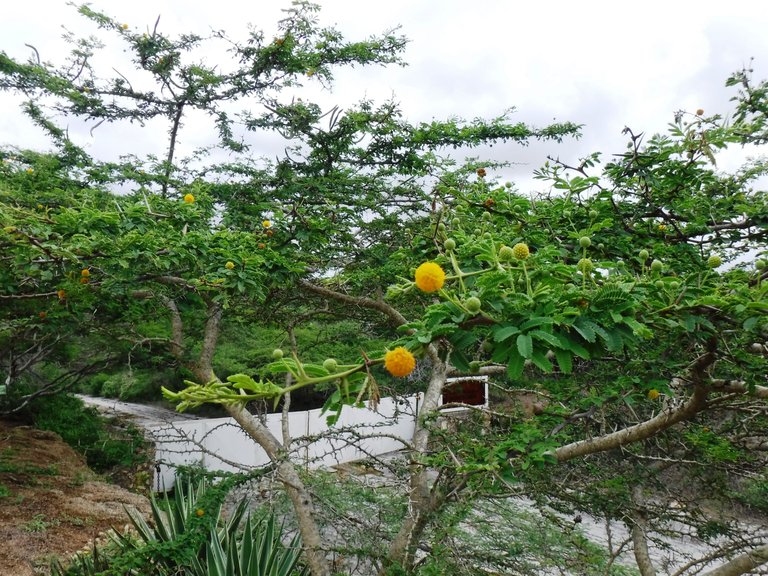
Currently there is only this and the one around Cerro Santa Ana, so the importance of its preservation is vital, these ecosystems are the refuge of the flora and wildlife characteristic of this region.
Actualmente sólo existe este y el que está en los alrededores del Cerro Santa Ana, por lo que la importancia de su preservación es vital, estos ecosistemas son el refugio de la flora y vida silvestre características de esta región.
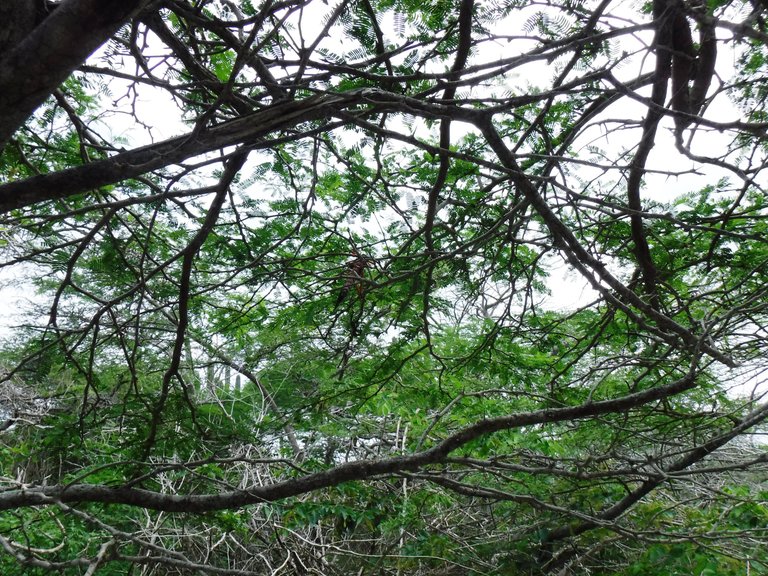
There is a 2 km trail through the reserve with nine stations identified as follows: Encounter with Nature, Epiphytism, Life-saving Trees, The Lagoon, The Beards of the Forest, The Crossroads of the Winds, The Path of Luck, Montecanoensis Square, and The Guardians of the Forest.
Para recorrer la reserva existe un sendero de 2 Km el cual tiene nueve estaciones identificadas así: Encuentro con la Naturaleza, Epifitismo, Árboles Salvavidas, La Laguna, Las Barbas del Bosque, El Cruce de Los Vientos, Camino de la Suerte, Plaza Montecanoensis y Los Guardianes del Bosque.
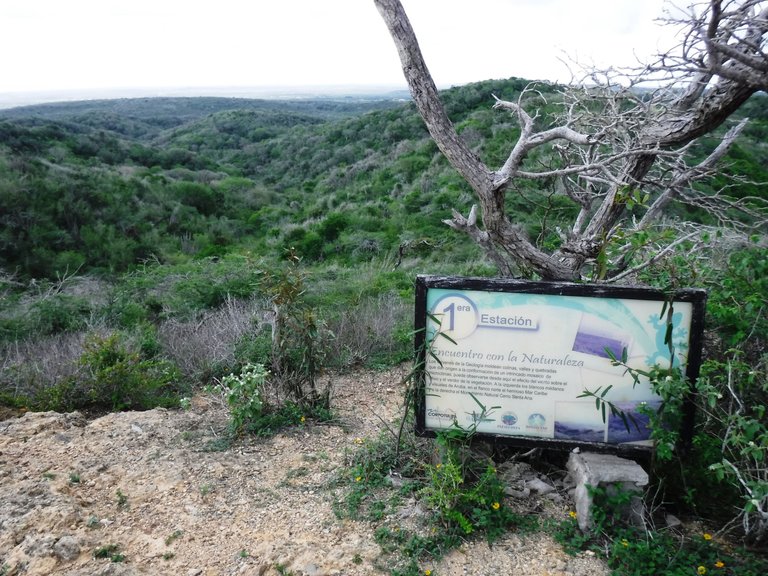
We started the hike and immediately upon entering the forest you feel an atypical freshness, in the Paraguaná Peninsula everything is arid and hot, or almost everything, because this place is an exception, an oasis.
Iniciamos la caminata y enseguida al adentrarte en el bosque sientes una frescura atípica, en la Península de Paraguaná todo es árido y caluroso, o casi todo, porque este lugar es una excepción, un oasis.
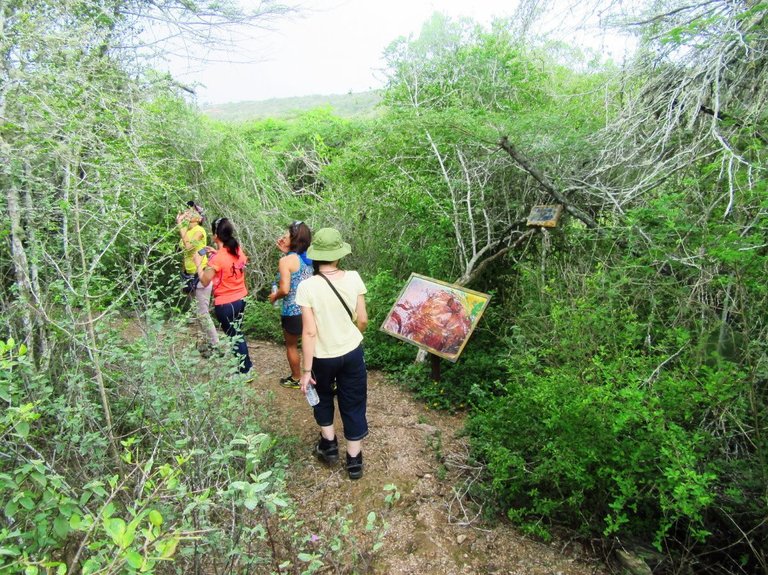
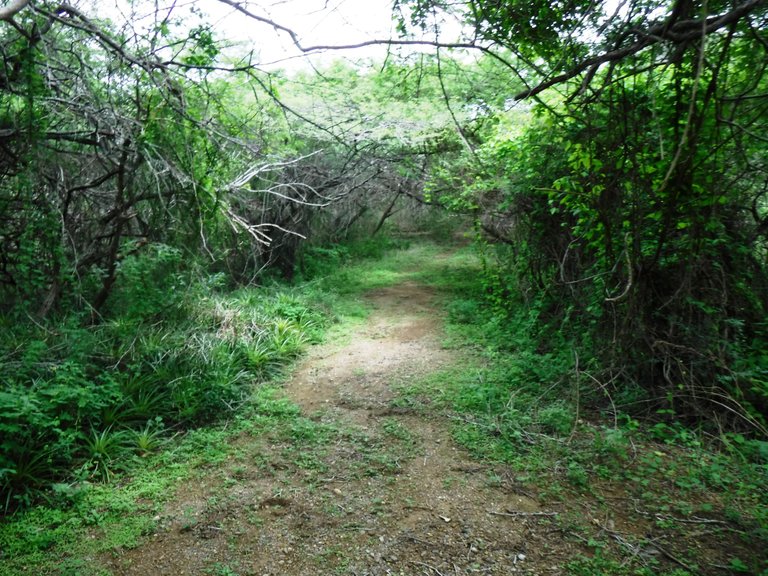
According to the guide, this reserve is a refuge for more than 180 species of birds, some permanent and others migratory, including the Red-crowned Woodpecker (Melanerpes rubricapillus), the Vermilion Cardinal (Cardinalis phoeniceus), the Venezuelan Troupial (Icterus icterus) and the Yellow-shouldered Parrot (Amazona barbadensis), which is in danger of extinction.
Según nos dijo la guía, esta reserva es el refugio de más de 180 especies de aves, algunas permanentes y otras migratorias, entre ellas están el Carpintero Habado (Melanerpes rubricapillus), el Cardenal Coriano (Cardinalis phoeniceus), el Turpial (Icterus icterus) y la Cotorra Cabeciamarilla o Cota (Amazona barbadensis), que está en peligro de extinción.
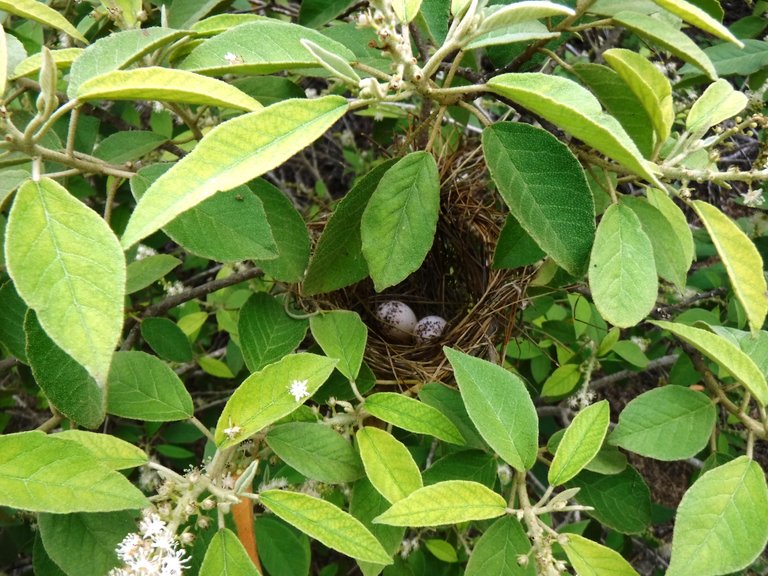
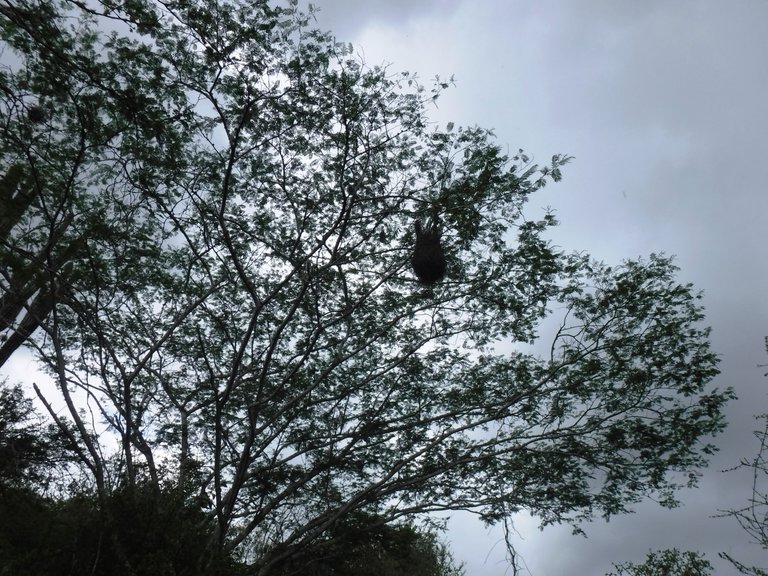
Another richness of this forest is the variety of reptiles that live here, starting with an endemic species, the Montecano Gecko (Lepidoblepharis montecanoensis), a lizard that measures less than 6 cm long, making it one of the smallest in the world. There is also the blue lizard, the true and false coral snakes, the Boa constrictor or Tragavenado, the Hueque scorpion (Tityus falconensis), which is endemic; Giant Scolopendras and the blue tarantula (Chronomatopelma cyaneopubescens), also native to these lands. We didn't manage to see all of these animals, but we did see some of them.
Otra riqueza de este bosque es la variedad de reptiles que hacen vida acá, empezando por una especie endémica, el Gecko de Montecano (Lepidoblepharis montecanoensis), un lagarto que mide menos de 6 cm de largo, por lo que está entre los más pequeños del mundo. También está el lagarto azul, las serpientes corales verdaderas y falsas, la Boa constrictora o Tragavenado, el Escorpión de Hueque (Tityus falconensis), el cual es endémico; Escolopendras Gigantes y la tarántula azul (Chronomatopelma cyaneopubescens), también autóctona de estas tierras. No logramos ver todos estos animales pero sí aparecieron algunos.
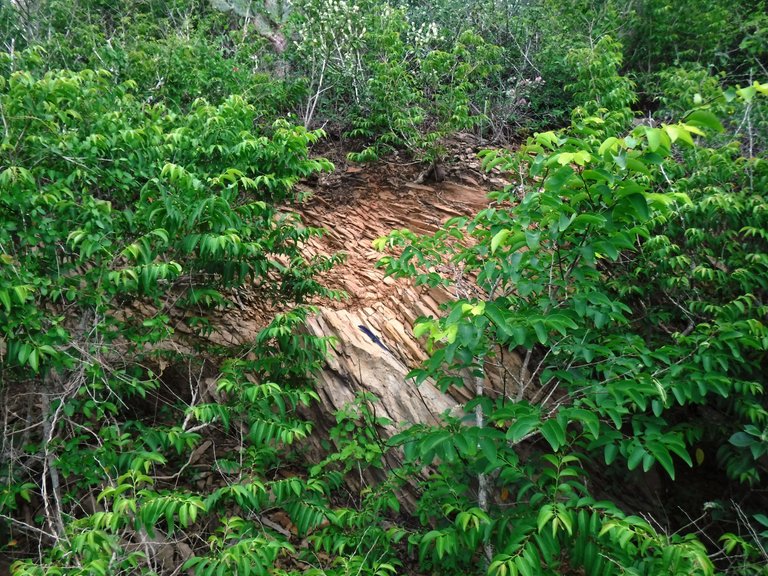
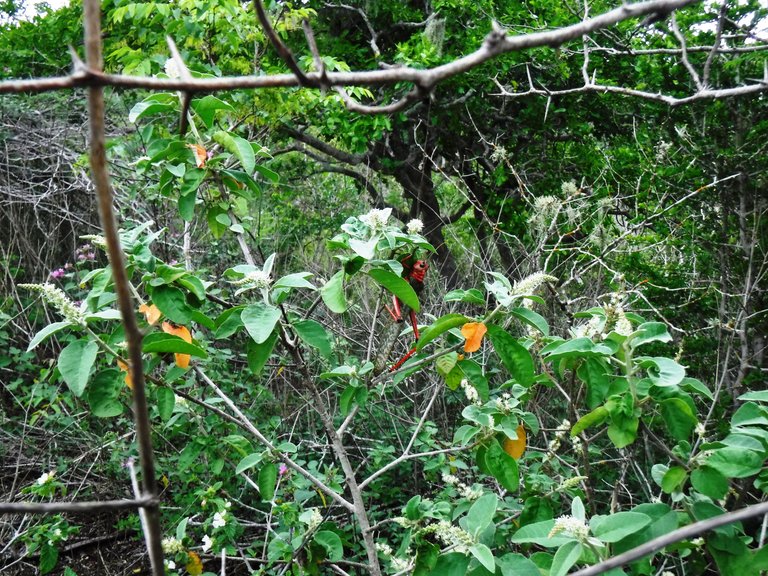
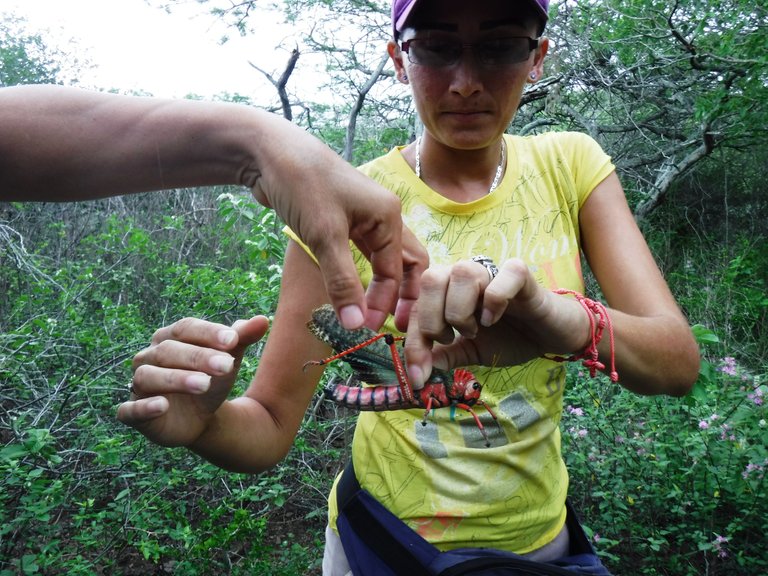
There are also ocelots, foxes, mice, and very important: thousands of Mustached bats (Pteronotus paraguanensis), another endemic species of the Paraguaná Peninsula whose role is vital in the control of insects, to pollinate and also to spread the seeds of native plants.
Además hay cunaguaros, zorros, ratones, y muy importante: miles de Murciélagos bigotudos (Pteronotus paraguanensis), otra especie endémica de la Península de Paraguaná cuyo rol es vital en el control de los insectos, para polinizar y también para esparcir las semillas de las plantas nativas.
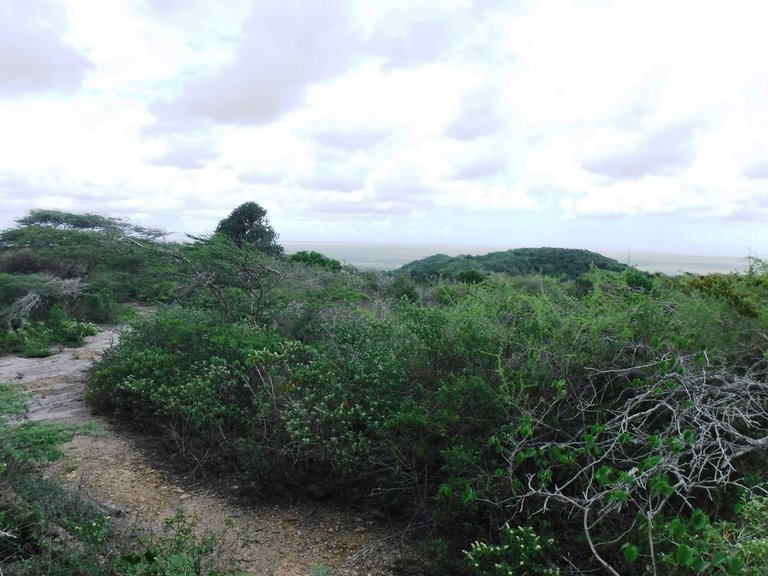
As for the flora of Montecano Biological Reserve, 62% of the plant species of Falcón state grow here, including emblematic plants of the region such as the Cotoperí (Talisia olivaeformis), Taque, Semeruco (species of the family Malpighiaceae), Pitahaya (endangered), Bromeliads, Orchids and the Stick Beard.
Precisamente, en cuanto a la flora de la Reserva Biológica Montecano, 62% de las especies vegetales del estado Falcón crecen aquí, plantas emblemáticas de la región como el Cotoperí (Talisia olivaeformis), el Taque, Semeruco (especie de la familia Malpighiaceae), la Pitahaya (en peligro de extinción), Bromelias, Orquídeas y la Barba de Palo.

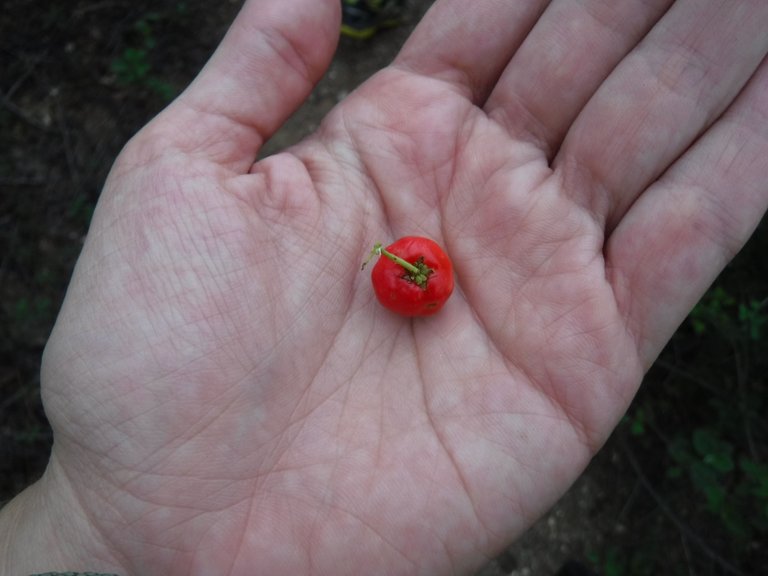
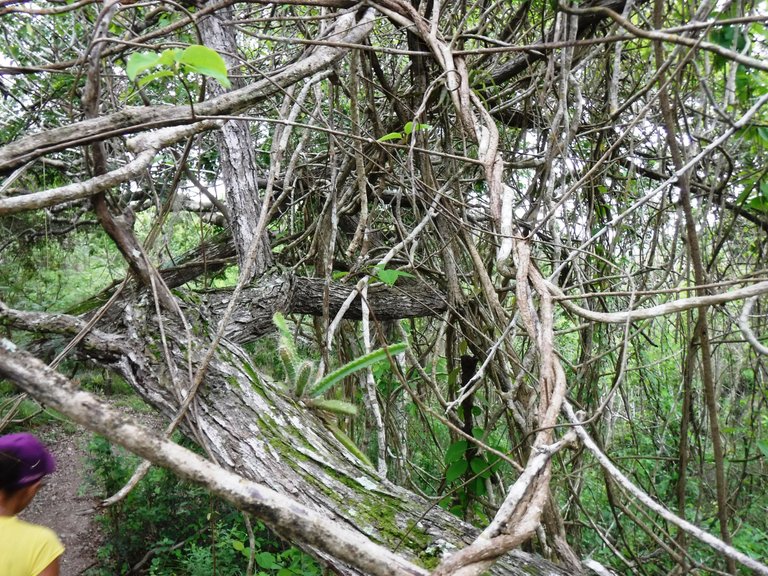
Talking about the Stick Beard (Tillandsia usneoides), we continued walking along the trail and saw that it is very abundant in this ecological reserve, its appearance creates a magical atmosphere, like a fairy tale or horror story too hehe.
Hablando de la Barba de Palo (Tillandsia usneoides), continuamos caminando por el sendero y vimos que es muy abundante en esta reserva ecológica, su aspecto crea un ambiente mágico, como de cuento de hadas o de terror también jeje.
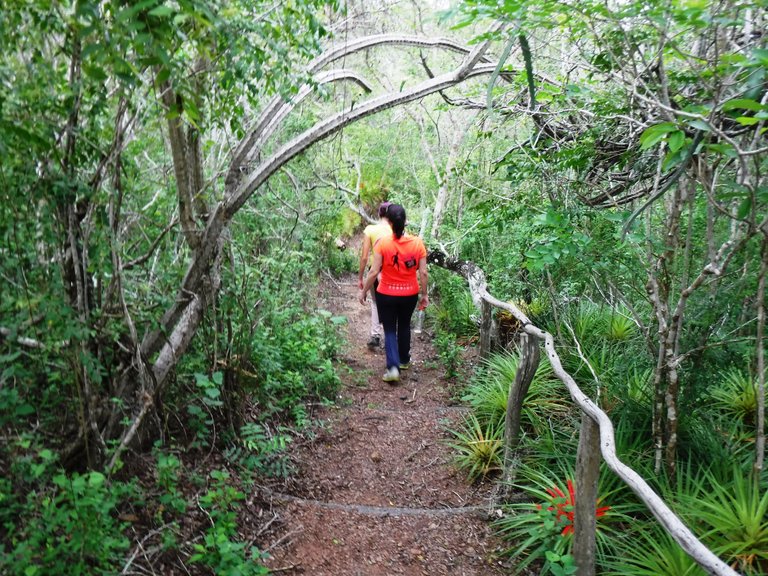
This epiphyte plant, which means that it grows on another plant or object using it as a support, really looks like a beard or a long gray hair, depending on the length it reaches in each place where it is born. The guide explained to us that its existence is crucial to maintain the water balance of the place and is home to many insects that feed the Mustached Bats.
Esta planta epifita, es decir que crece sobre otra planta u objeto usándolo como soporte, de verdad que parece como una barba o una larga cabellera gris, dependiendo la longitud que alcanza en cada lugar donde nace. Nos explicó la guía que su existencia es crucial para mantener el balance hídrico del lugar y es el hogar de muchos insectos que alimentan a los Murciélagos bigotudos.
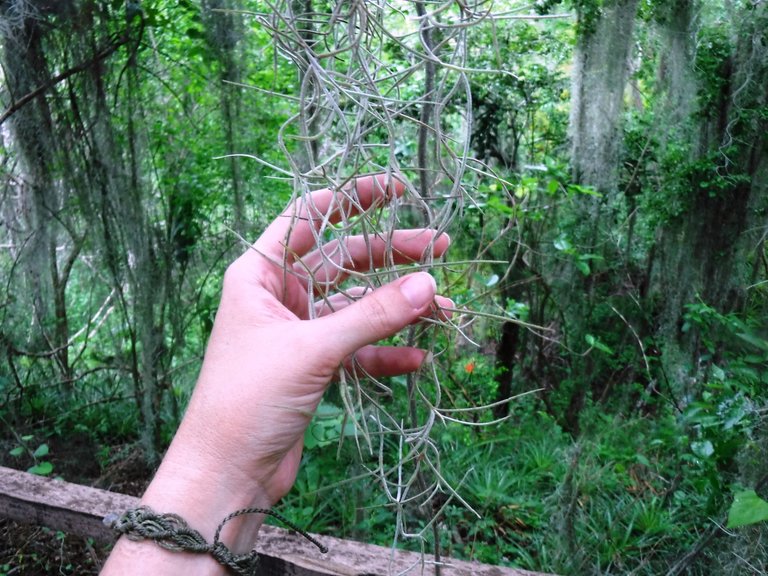
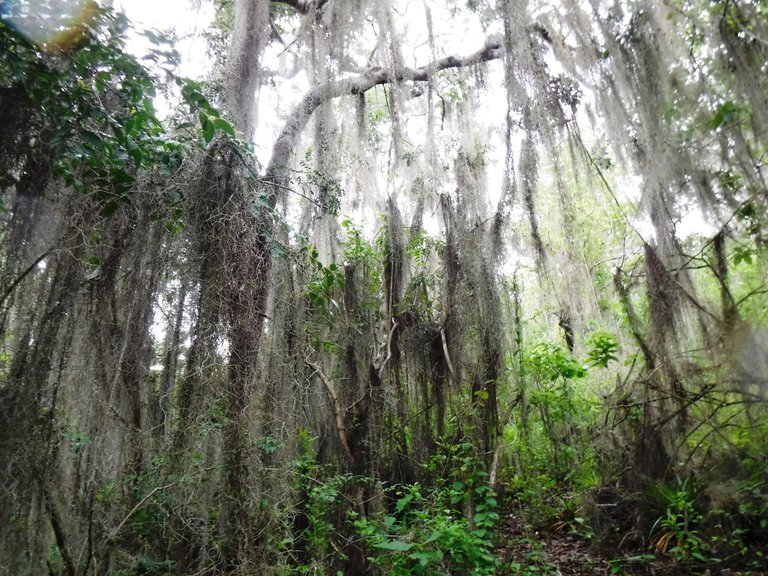
In 1995 Montecano Biological Reserve was declared Municipal Natural Heritage, in 2003 it was recognized as Natural and Ecotourism Heritage of Falcón State and in 2019 it was named Natural Monument of Venezuela.
En 1995 la Reserva Biológica Montecano fue declarada Patrimonio Natural Municipal, en 2003 se la reconoció como Patrimonio Natural y Ecoturístico del estado Falcón y en 2019 fue nombrada Monumento Natural de Venezuela.
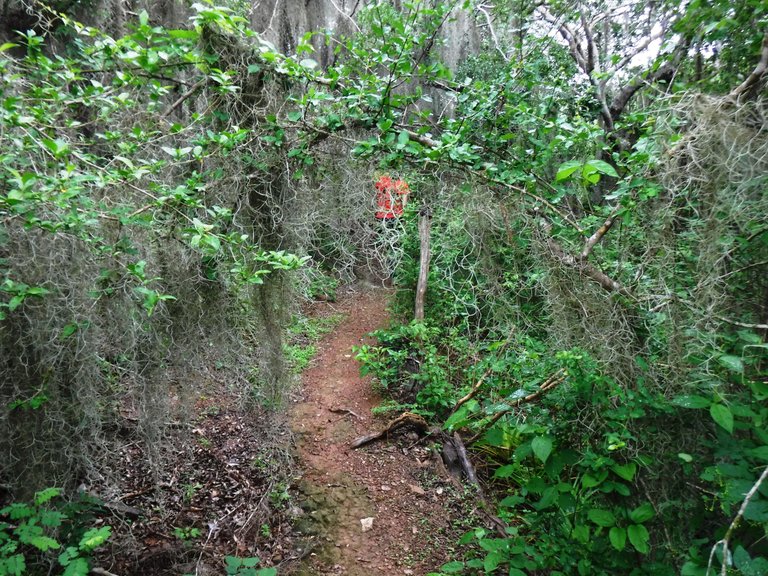
It is a space for scientific research and that is why many university institutions and also individuals visit it to carry out studies in different disciplines: biology, archeology, geology, etc. It is also home to the Esteban Cuauro School of Environmental and Eco-tourism Training, which is dedicated to promoting eco-environmental information and research.
Es un espacio para la investigación científica y por eso muchas instituciones universitarias y también particulares la visitan para realizar estudios en distintas disciplinas: biología, arqueología, geología, etc. Además funciona aquí la Escuela de Formación Ambiental y Eco-turística Esteban Cuauro, que se dedica a fomentar la información e investigación ecoambiental.
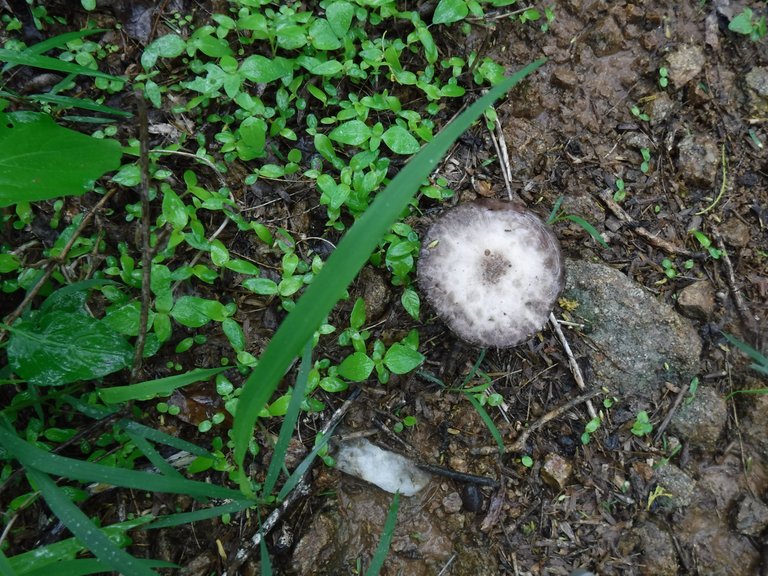
I really enjoyed this tour of almost an hour, I invite you to do ecological tourism wherever you go, because observing natural areas like this makes us aware of the importance of absolutely all living beings that inhabit the earth, each one fulfills a function that we must respect and if we don't do so, extinction will also take us.
Disfruté mucho este recorrido de casi una hora, los invito a hacer turismo ecológico a donde quiera que vayan, porque observar áreas naturales como esta nos concientiza sobre la importancia que tienen absolutamente todos los seres vivos que habitan la tierra, cada uno cumple una función que debemos respetar y si no lo hacemos la extinción también nos llevará a nosotros.
Except for those mentioned with its credit, all photos are my property / Excepto las mencionadas con su crédito, todas las fotos son de mi propiedad
What an amazing place literally packed with all kinds of fascinating fauna and flora, wow! Btw that giant grasshopper is so cool! :)
@tipu curate
Yessss, that grasshopper is a little scary at first but when you get to know it up close it's really cute hehe. Thanks for supporting me! :D
Upvoted 👌 (Mana: 25/45) Liquid rewards.
Wow!!! Amazing nature
It really is! 🍃
We appreciate your work and your publication has been hand selected by the geography curation team on behalf of the Amazing Nature Community. Keep up the good work!
😃 Thank you so much!!!
The rewards earned on this comment will go directly to the people( @sofathana ) sharing the post on Twitter as long as they are registered with @poshtoken. Sign up at https://hiveposh.com.
Congratulations, your post has been added to Pinmapple! 🎉🥳🍍
Did you know you have your own profile map?
And every post has their own map too!
Want to have your post on the map too?